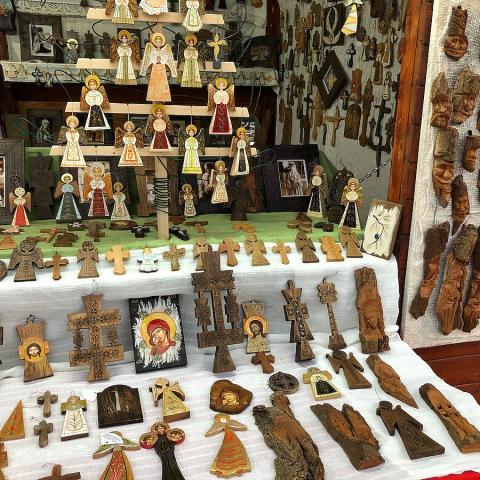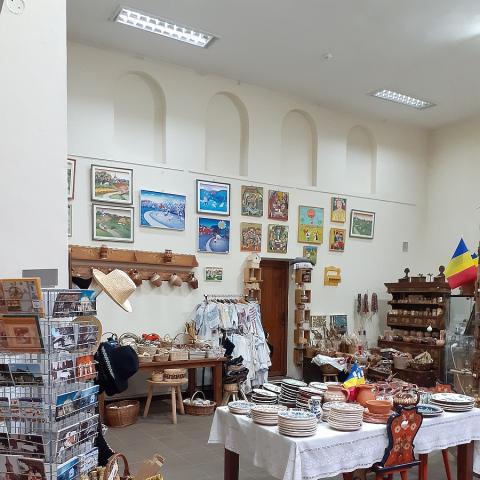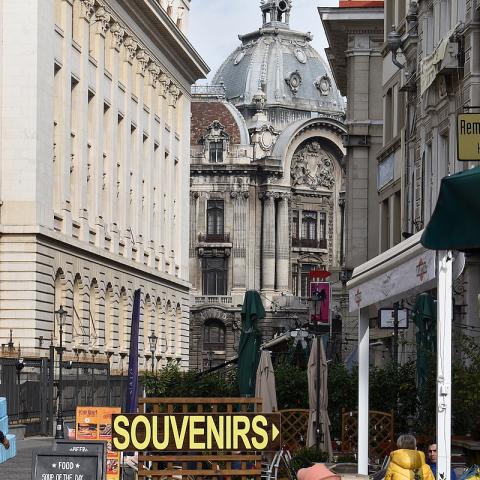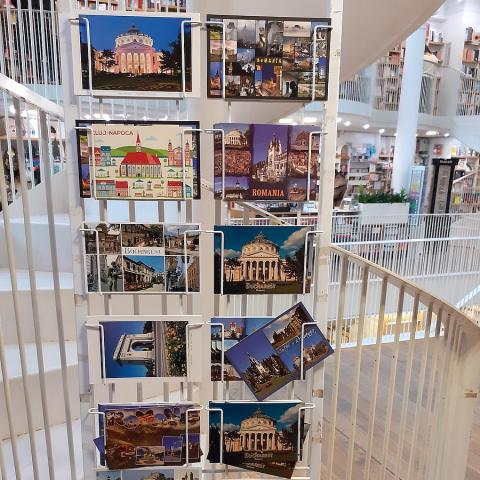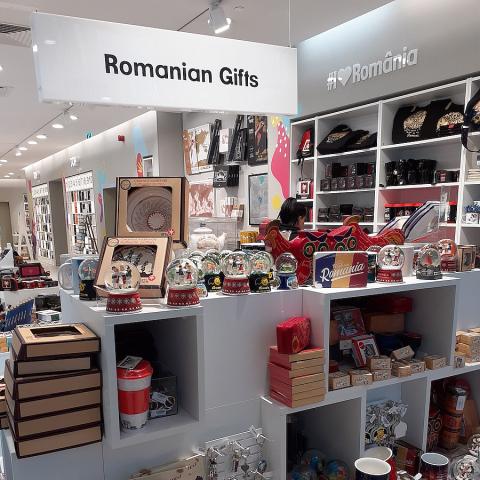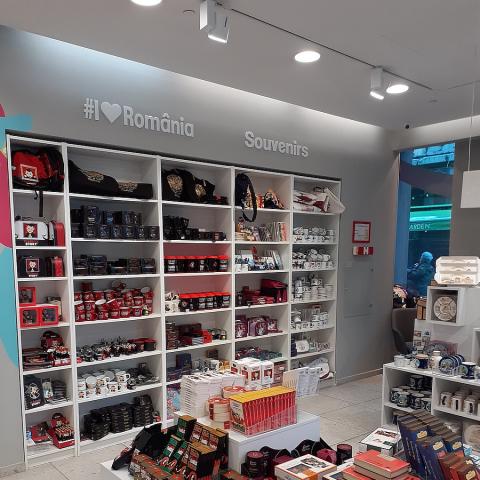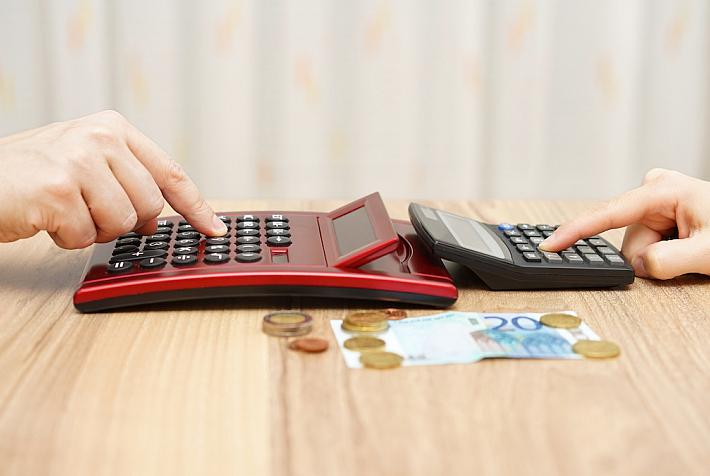"Destination: Bucharest" - Souvenirs from Romania
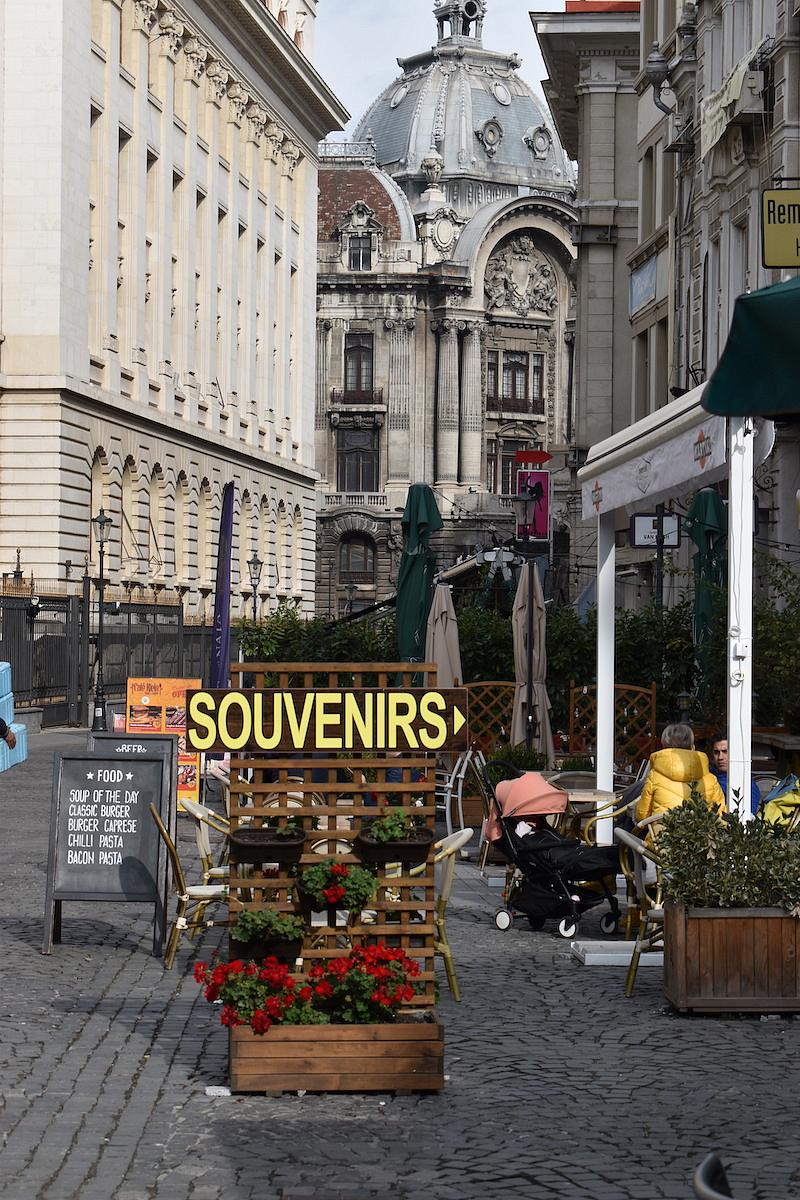
What are the items that can remind visitors of their holiday in Romania? What presents with a local theme can we gift those interested in Romanian culture? What are the characters that populate the tourist imagery associated with Romania? From hand-crafted objects to textiles and gastronomy products, we review the souvenir offer available at the stores in the city.
One of the best venues to find souvenirs is the shop of the Dimitrie Gusti National Village Museum. The museum has an exceptional patrimony of vernacular architecture and is worth visiting anytime. Those who wish to keep a memory of the creativity of the local craftsmen can pick a gift from the rich offer of the shop, where, at the entrance, we find a group of students getting ready to visit the site. Inside the shop, two tourists are having a conversation in Spanish on the best postcards to buy.
The ceramics immediately catch our eye: plates, bowls, pitchers, mugs or candlesticks. They come from pottery centers that are famous in the country, and not only, among them Horezu, Rădauți, Baia Mare, Corund, Marginea, or Vladești. The Horezu ceramics, included on UNESCO’s List of the Intangible Cultural Heritage of Humanity, have a manufacturing process that involves both women and men. Men extract the clay and mold it, while women decorate the pottery using traditional techniques and motifs. The items vary in color from shades of dark brown, red, green and blue to the famed ‘Horezu ivory’. The Corund ceramics, produced in Harghita county, are decorated with the help of a nib made of a goose plume, cattle horn or metal, before being burnt in the hearth. The items can have a white, brown, blue color or can be multicolored, and are decorated with floral and zoomorphic drawings. The Marginea ceramics are made in the commune of the same name in Suceava county. The clay used in the making of the items is burnt in hearts for more than eight hours and the smoke infiltrates the pots, giving them their black color.
Some of the most beautiful textile items that can be offered or taken as a souvenir are the carpets and wall-carpetsmade using traditional techniques. The traditional wall-carpet craftsmanship has been included on UNESCO’s Representative List of the Intangible Cultural Heritage of Humanity and is viewed as “an expression of creativity and identity marker” and “a tool to unite groups in society of different ages and socioeconomic backgrounds.” In the past, the wall-carpets, woven on looms and bearing motifs typical to the locality they were made in, were used to insulate and decorate the walls of households. They were also part of a bride’s dowry. At the store, you can find carpets made in Maramureș, Oltenia, Bucovina or Muntenia.
The traditional blouse ia, featured in paintings by Nicolae Grigorescu, Constantin Daniel Rosenthal or Henri Matisse, can also make a good souvenir. It is made of cotton, linen or silk and is decorated with folk motifs on the sleeves, the front and around the neck opening. An international day of the Romanian blouse ia was established in recent years and the blouse is worn increasingly often, in various combinations. Besides the ia, various towels or items that are part of the traditional dress – shirts, vests, skirts – can also be offered or taken as souvenirs.
For the tourists visiting Romania, the painted churches in the north of Moldavia, part of them in the UNESCO patrimony, are some of the main attractions. Their walls are decorated with frescoes depicting various religious scenes and having the role of making the Biblical stories known to the village inhabitants. A recollection of these sites can be kept in the form of a wood or glass-painted icon. You can find them at the various fairs where local craftsmen show their work or at the shops of the Village Museum and of the Romanian Peasant Museum in Bucharest.
The decorated Easter eggs can be another souvenir from Romania. The eggs are decorated with various motifs using beeswax. They are successively submerged in various color baths and, at the end, the beeswax layers are removed in order to highlight the drawings. Some of the most common motifs are the Easter cross and flower, the fir tree, the oak tree leaf, the shepherd’s ring and whistle, the comb of the rooster, the village road or the plow iron, among others.
The hand-made wood objects are an expression of the aptitude of the local craftsmen and can also make a beautiful souvenir. You can find spoons, bowls, trays and boxes, as well as musical instruments or furniture items.
The items designed by local craftsmen are many, but we also find in the shop more “modern” souvenirs. Among the wicker baskets, jugs, painted chairs, hats or textile bags, we also discover magnets, T-shirts, mugs, caps with the name of the country, but also Barbie-type dolls wearing traditional clothing. For the winter season, hand-made Christmas tree decorations are on display, and for the home – lavender sachets with an alluring scent.
We also stop in the Old Town, an attraction point for tourists, and, naturally, one of the areas with many souvenir shops. From Calea Victoriei, crossing Lipscani street and all the way to the area of the Cocor store – Unirii Square, we find many such stores. Some keep their old name – Artizanat – while others let potential clients know straightforwardly that this is where they will find souvenirs.
The offer combines the traditional with recent myths. We discover here both traditional dress items (ia blouses, scarves and head scarves), wood-carved items, baskets, icons, painted eggs, bead bracelets with folk motifs and an entire series of items inscribed with the name of Bucharest and Romania: magnets, mugs, T-shirts, bags, key rings, corkscrews, piggy banks or plates - I heart Bucharest/ I heart Romania.
The Palace of the Parliament, one of the most visited tourist sites of the Capital, has turned into an inspiration for many souvenirs: magnets or 3D printed models. Leaders, rulers and kings from the country’s history can also be seen as souvenir figurines. We thus find Decebal, also represented on magnets, key rings or glasses, Ștefan cel Mare, Mihai Viteazul, King Carol I, King Ferdinand and, of course, Vlad Țepeș. The character imagined by Bram Stocker, inspired from the latter’s personality, is one of the most popular souvenirs – statues and figurines of various sizes representing Dracula and items marked with this figure making a familiar sight.
In his turn, he inspired a character that describes himself as “a modern little vampire” – Vlăduț, a brand encompassing sweets (chocolate covered plums, salted caramels, gingerbread, cookies or chocolate), school supplies, figurines and various accessories that you can find at one of the bookstores in the Old Town, other locations with a consistent offer of souvenirs.
The Dracula character and references to him can be found in very many products, more or less likely ones, from the pen wrapped in a casket-shaped box carrying a quote from Bram Stocker (”Knowledge is stronger than memory”) to drinks such as Potion of Dracula (plum or apple brandy) and sweets or phone cases under the name Bloody Famous, a word combination that hints to the same figure.
Romanian history books in translation are an alternative gift that could help sort out myths from real events. At the bookstores in the Old Town we find, for instance “A Brief Illustrated History of Romanians” by Neagu Djuvara or “A Concise History of Romania by Keith Hitchins.” Also in English, we find a monography on Mircea cel Bătrân or volumes on the architecture of Bucharest and the history of Communism. A Romanian history volume is also available in German, while in French we find a volume dedicated to sculptor Constantin Brâncuși.
When it comes to gastronomy, the offer of potential presents is also rich: salted crackers, chocolate truffles, gingerbread, cookies, filled shortcrust pastry bites, wholegrain crackers or chocolate candies. A traditional Romanian product to offer as a gift is the Topoloveni jam, having a Protected Geographical Status in the European Union. It is made of very ripe plums, without added sugar. You can find it in the Topoloveni Topoloveana stores in Bucharest and at the Bucharest Christmas Market, open until December 26. At the market, you will also find many local producers and many presents to offer as a souvenir from Romania, from ceramics and hand-made wood products to icons and traditional clothing items.
Addresses:
Dimitrie Gusti National Village Museum: 28 – 30 Kiseleff Road, muzeul-satului.ro
National Museum of Romanian Peasant: 3 Kiseleff Road, muzeultaranuluiroman.ro
Diverta Lipscani: 30 - 34 Lipscani St., www.dol.ro
Cărturești Carusel: 55 Lipscani St., carturesticarusel.ro
Old Town Souvenirs: 13 Smârdan St.
Romanian Boutique: 27 Bărăției St., www.romanianboutique.ro
Topoloveni Topoloveana: 57 Carol I Blvd. and 26 C.A. Rosetti St., www.magiun-sonimpex.ro
This material is part of a project under the program of promoting the touristic heritage "Destination: Bucharest", carried out by the Bucharest City Hall through the Public Monuments and Touristic Heritage Administration (AMPT).
Photos by Romania-Insider.com for AMPT








